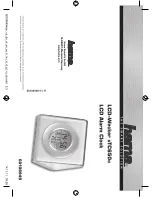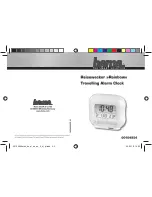
2
2.2 Wires can be run either in surface way or recessed. For flush wiring wires shall be lied
down by first and then the transceiver unit or remote indicator and control unit can be mounted.
For surface wiring installation order doesn’t matter.
2.3 Wires should be passed through the side holes in the base located above the side notches
in the mounting base. To provide optimal wiring location of the relevant terminal groups should
be taken into account.
2.4 While mounting the detectors into fire alarm systems please use wires and cables which
meet the requirements of the operation documentation for the polling loop controller S2000-KDL
or S2000-KDL-2I.
2.5 The length of the cable connecting the transceiver unit with the remote indicator and
control unit should be minimized and not exceed 30 meters.
2.6 In the presence of regular high-power electromagnetic radiation in the premises covered
by the detectors the polling loops and other connecting wires shall be protected against
electromagnetic interference (by using twisted pair wiring, protective shielding, etc.).
2.7 The terminal blocks of the detector enable connecting wires with cross-section area 0.2 to
1.5 sq. mm (wire diameter 0.5 to 1.3 mm). If wires of 0.8 mm diameter or less are used then
their ends shall be looped.
2.8 The housing of the transceiver unit can be removed if only there are no locking screws in
the latches at the top and the bottom of the housing. To remove the housing, release both the
latches pressing on them and pull the housing at right angle to the lens.
2.9 To place the housing back, insert it into the latches and slightly push until it is fixed.
Additional fixation of the housing using two self-tapping screws from Mounting Kit No. 1 should
be made only in case of possible danger of mechanical effects on the detector during operation.
3 WIRING
3.1 The general schematic for wiring the detector is shown in Figure 2.
3.2 The detector operates under a polling loop controller programmed by means of UProg
software utility. Using UProg, in the PL controller’s configuration the type of addressable device
for the detector’s address should be set to 3, Heat Fire. Select the value 2, Controlled by the
S2000-KDL for the parameter Device Indication Control. Please refer to the PL controller User’s
Manual and UProg documentation to read more about selecting the type of addressable
devices and configuration parameters.

























